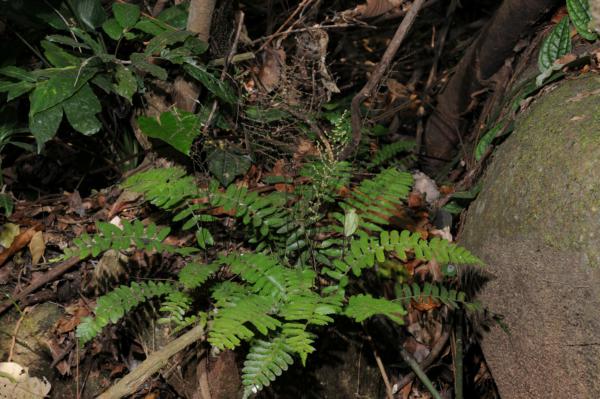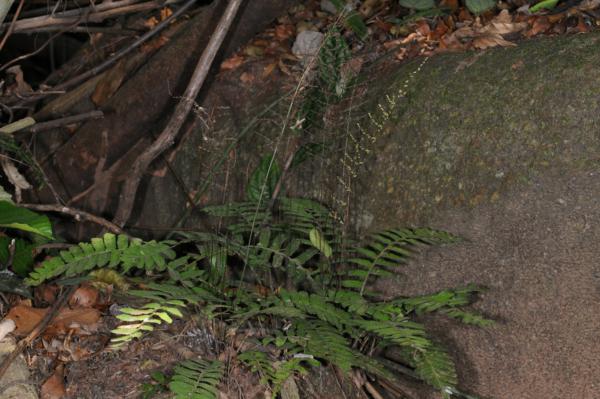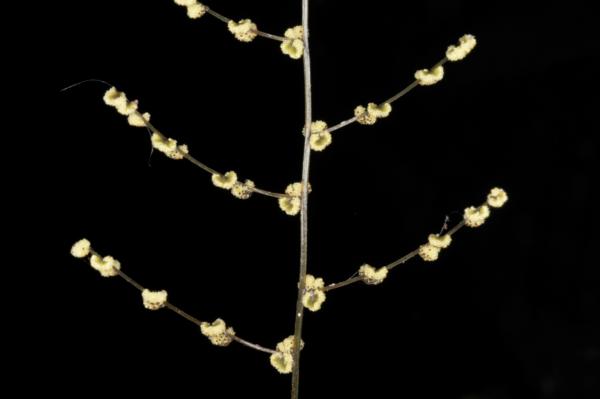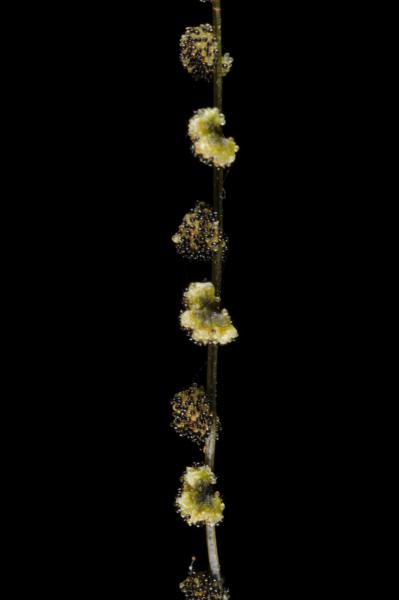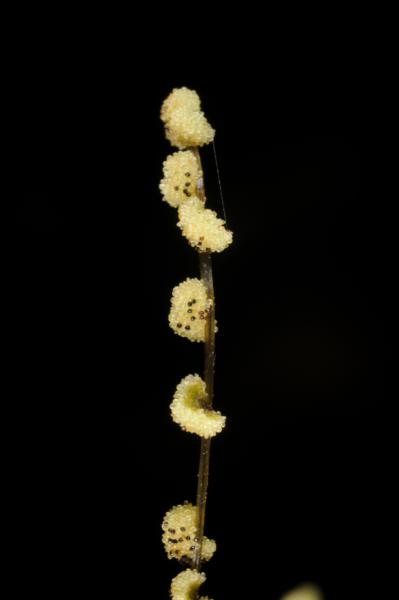
Bolbitis hookeriana K.Iwats.
Family
Dryopteridaceae
Nomenclature
Bolbitis hookeriana K.Iwats., Acta Phytotax. Geobot. 18: 49. 1959; Tagawa & K.Iwats., Fl. Thailand 3: 317. 1988; Boonkerd & Pollawatn, Pterid. Thailand: 183. 2000; Newman et al., Checkl. Vasc. Pl. Lao PDR: 27. 2007.
Polybotrya vivipara Buch.-Ham. ex Hook., Exot. Fl.: t. 107. 1825. – Egenolfia vivipara (Buch.-Ham. ex Hook.) C.Chr., Index Filic. Suppl. III.: 102. 1934; Tardieu & C.Chr., Fl. Indo-Chine 7(2): 423. 1941. – Bolbitis appendiculata subsp. vivipara (Buch.-Ham. ex Hook.) Hennipman, Blumea 18: 147. 1970; Hennipman, Leiden Bot. Ser. 2: 196, f. 50a–h, 51. 1977; Boonkerd & Pollawatn, Pterid. Thailand: 182. 2000.
Polybotrya appendiculata var. hamiltoniana Bedd., Handb. Ferns Brit. India: 426, f. 256. 1883.
Polybotrya nodiflora Bory in Bél., Voy. Indes Or. II.: 17. 1833. – Egenolfia nodiflora (Bory) Fée, Mém. Foug., 2. Hist. Acrostich. 77, pl. 38, f. 2. 1845; Ching, Bull. Fan Mem. Inst. Biol. 2: 304. 1931.
Description
Terrestrial. Rhizome short creeping, up to 1 cm diam.; scales gradually narrowing from base towards long-acuminate apex, up to 5 by 0.5 mm, entire or with irregular projections at margin, concolorously brown, not clathrate. Stipes stramineous, grooved above, scaly throughout with narrow subclathrate scales, about 10 cm long in sterile fronds, twice as long as in fertile ones. Sterile lamina up to 67 by 10 cm; middle lateral pinnae the largest, patent or ascending, very shortly stalked, elliptic with acute apex and truncate or very broadly cuneate at base, subentire or slightly crenate at margin, up to 4.7 by 1.5 cm, the lower ones shorter, patent or deflexed, apical pinna narrowly subtriangular, elongate at apex, up to 5 cm long, gemmiferous; rachis stramineous, minutely scaly throughout, winged in upper portion; costa raised on both surfaces, pale, glabrous, veins more or less visible, all free, basiscopic branches of vein groups running to sinus ending in distinct teeth about 0.7 mm in length. Fertile lamina bipinnate, to 22 by 7 cm; pinnae 1–1.5 cm apart, moniliform, shortly stalked, 17 by 1.7 mm, sporangia forming 5–8 groups but usually confluent at maturity.
Distribution in Thailand
NORTHERN: Mae Hong Son, Chiang Mai, Lampang, Tak; SOUTH-WESTERN: Uthai Thani, Kanchanaburi.
Distribution in Laos
Champasak, Savannakhet.
Wider Distribution
N India and Indochina.
Ecology
On mountain slopes in dense evergreen forests at medium altitude.
Similar species
Bolbitis appendiculata (Willd.) K.Iwats.
Proposed IUCN Conservation Assessment
Least Concern (LC). This species is widespread and not under any known threats.
Notes
This species is close to Bolbitis appendiculata (Willd.) K.Iwats. and has sometimes been treated as Bolbitis appendiculata subsp. vivipara (Buch.-Ham. ex Hook.) Hennipman.
Voucher specimens - Thailand
Middleton et al. 4748, Kanchanaburi, Khao Laem National Park (E).
Voucher specimens - Laos
Maxwell 97-1151, Chamapsak (CMU).
Habit
Habit
Fertile frond
Fertile pinnae
Young sori
Site hosted by the Royal Botanic Garden Edinburgh. Content managed by Stuart Lindsay, Gardens by the Bay, Singapore and David Middleton, Singapore Botanic Gardens. Last updated 24 January 2012
